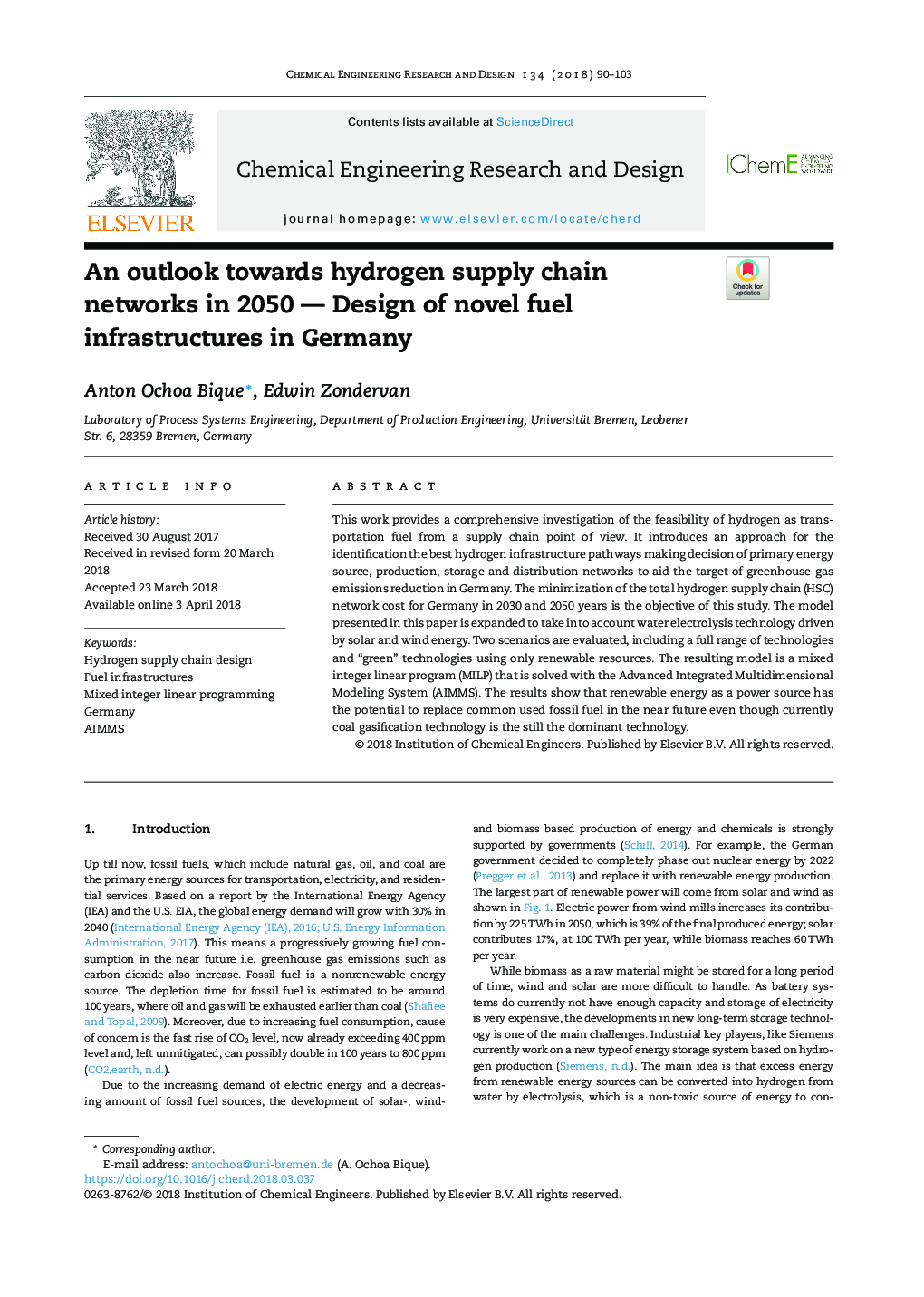| Article ID | Journal | Published Year | Pages | File Type |
|---|---|---|---|---|
| 7005777 | Chemical Engineering Research and Design | 2018 | 14 Pages |
Abstract
This work provides a comprehensive investigation of the feasibility of hydrogen as transportation fuel from a supply chain point of view. It introduces an approach for the identification the best hydrogen infrastructure pathways making decision of primary energy source, production, storage and distribution networks to aid the target of greenhouse gas emissions reduction in Germany. The minimization of the total hydrogen supply chain (HSC) network cost for Germany in 2030 and 2050 years is the objective of this study. The model presented in this paper is expanded to take into account water electrolysis technology driven by solar and wind energy. Two scenarios are evaluated, including a full range of technologies and “green” technologies using only renewable resources. The resulting model is a mixed integer linear program (MILP) that is solved with the Advanced Integrated Multidimensional Modeling System (AIMMS). The results show that renewable energy as a power source has the potential to replace common used fossil fuel in the near future even though currently coal gasification technology is the still the dominant technology.
Related Topics
Physical Sciences and Engineering
Chemical Engineering
Filtration and Separation
Authors
Anton Ochoa Bique, Edwin Zondervan,
